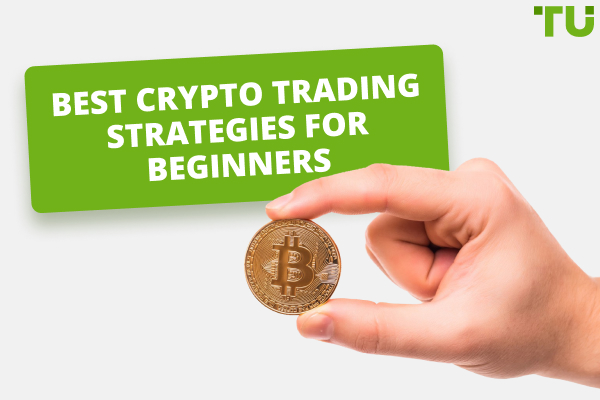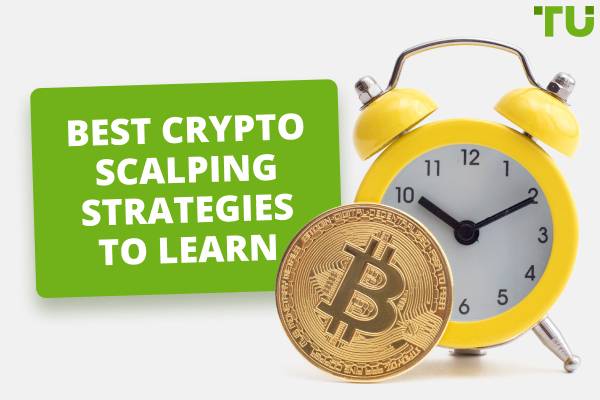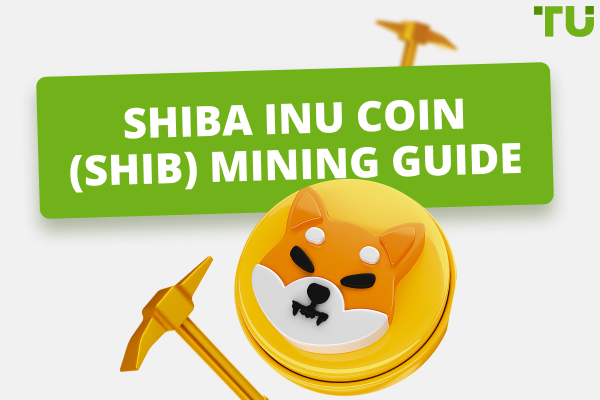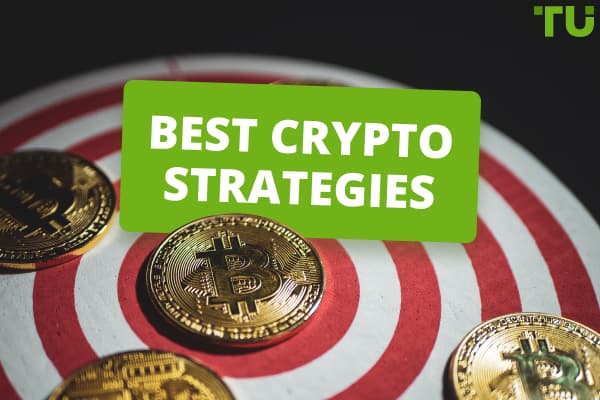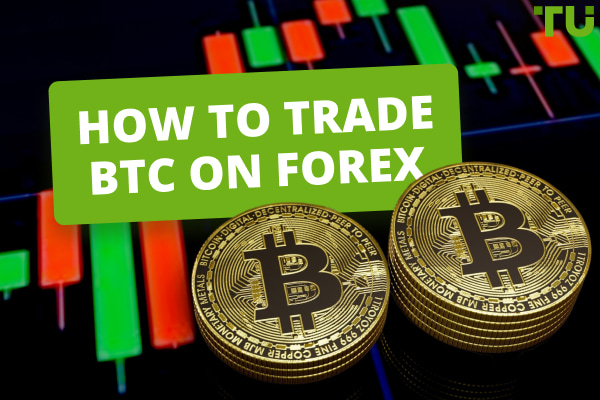Binance Smart Chain Review
Binance Smart Chain (BSC) with a dual-chain architecture allows users to develop their decentralized apps and digital assets and then transfer them to Binance Chain for ultra-fast trading. Users can choose a wallet for Binance Smart Chain: MetaMask, Trust Wallet or Binance Chain Wallet.
Setting up Binance Smart Chain is not difficult, with the main difference from Binance Chain being increased flexibility up to the deployment of additional token issuance standards. In this article, we will explain in detail how to use BSC.
Start investing in crypto now with ByBit!What is Binance Smart Chain?
The Binance Chain blockchain was launched in 2019. Its purpose was to develop a platform for non-custodial trading at the highest possible speed. Due to this, a decentralized exchange (DEX) became the most popular app on Binance Chain.
However, because of its architecture, the Binance Chain is not flexible enough in terms of programmability and is not suitable for solving other tasks. For example, you can’t use smart contracts on it, as they greatly overload the network. CryptoKitty, a popular gaming app with NFTs, can be used as an example in this case. At its peak operation, the app practically stopped the operation of the Ethereum blockchain.
For this reason, the developers of the Binance ecosystem decided to add Binance Smart Chain. The new network is designed to solve the biggest problem of Binance Chain, i.e. insufficient scalability. BSC is actually a blockchain that operates simultaneously with Binance Chain, and they have a high level of integration with one another (this means that you can transfer the assets you are using on one blockchain to the other).
Binance Smart Chain uses smart contracts; the network is compatible with EVM (Ethereum Virtual Machine). However, like in the original Binance Chain, high network capacity is maintained. At that, even the basic setting of BSC makes it clear that this solution is not a Layer 2 or off-chain one. If Binance Chain goes down, Binance Smart Chain will continue to operate without any issues.
The benefits of scalability and smart contracts are clear: they provide a possibility to create any decentralized app and launch digital assets on the platform. But what about compatibility with EVM? This means that the developers and users of Binance Smart Chain can access all Ethereum blockchain instruments. Moreover, developers can move their projects from Ethereum to BSC and back. Users can connect MetaMask to Binance Smart Chain. This makes it a unique solution.
Benefits of Binance Smart Chain
a fully independent and autonomous blockchain;
supports smart contracts and is compatible with EVM;
all Ethereum instruments and features are available;
integrated with Binance Chain;
dApps are easily scaled;
fast and secure;
increased community involvement.
Drawbacks of Binance Smart Chain
Centralization. In truth, Binance Smart Chain is considerably centralized, which partially violates the very concept of a blockchain as an uncontrolled system. In the case with BSC, only 21 validators are active in the network at any time; this is the compromise that ensures extremely high speed of the blockchain. However, an increased level of centralization makes the blockchain potentially more vulnerable to failures and hacker attacks.
Resource intensity. All validators in the network are selected by Binance and are subject to increased requirements in terms of technical capabilities. For example, a node operator must have at least 500 GB of free disk space, while the Bitcoin blockchain, which has existed much longer than Binance Smart Chain, takes up just over 320 GB.
Lagging. As we’ve already said, it is easy to integrate BSC to MetaMask, because Binance Smart Chain is technically a modified fork of Ethereum. However, for the very same reason, it reacts to innovations much slower than the ‘mother’ blockchain. This means that the new solutions are introduced on Ethereum first, appearing on BSC later. This means that BSC users will always lose to Ethereum users in terms of opportunities and potential.
It would be fair to say that Binance management has never tried to conceal the drawbacks of the platform, including its dependence on Ethereum. The launch of Binance Smart Chain was not aimed at creating competition to Buterin’s platform. This is rather an inexpensive alternative that Ethereum Layer 2 solutions compete with.
Comparison of Binance Smart Chain, Binance Chain and Ethereum
Binance Smart Chain is controlled by Binance. However, the company has much less control over this platform than over Binance Chain. Both blockchains have high speed of block creation, but due to the compromises made during implementation of BSC, its speed is lower. Nevertheless, the blocks on it are still created 4 times faster than on the Ethereum 2.0 blockchain.
High fees remain the biggest issue of Ethereum. This blockchain uses the so-called gas model, which provides an opportunity to change the complexity of a transaction. Users do not set the price for gas; it transforms in response to the transaction demand. The fee of Ethereum 2.0 is still higher than BSC.
| Criterion | Binance Smart Chain | Binance Chain | Ethereum 2.0 |
|---|---|---|---|
Decentralization level |
Average |
Low |
High |
Scalability |
High |
Low |
High |
Consensus mechanism |
PoSA |
Tendermint BFT |
PoS |
Number of validators |
21 |
1 |
16,384 |
Block time |
3 seconds |
Less than 1 second |
12 seconds |
Fee |
Very low |
Low |
Average |
Token standards |
ВЕР-20, BEP-721 and others |
Only ВЕР-2 |
ERC-20, ERC-721 and others |
Note that ВЕР-20 and ВЕР-721 standards are extensions of ERC-20 and ERC-721 standards, which is why token conversion is possible between Binance Smart Chain and Ethereum 2.0. For the same reason, because of the proximity of the platforms in terms of architecture, BSC can be easily integrated into MetaMask.
It is important to understand that although Binance Chain was created as a provisionally universal solution, it actually exists primarily to support the operation of DEX. Binance Smart Chain is a programmable platform; any decentralized app can be hosted on it or it can be transferred from Ethereum.
Control is probably the key difference of BSC from BC. The thing is that there is only one validator on Binance Chain and that is the platform itself, i.e. its management. In the case of Binance Smart Chain, 21 users are the validators. The blockchain is becoming more decentralized, although not like Ethereum, because it is still Binance that approves the validators.
Finally, let’s discuss tokens. BC uses native tokens BNB that are minted on the BEP-2 standard. A full article can be dedicated to token standards, but to put it simply, a standard is a type of coin that determines its structure. BSC uses BEP-20, which is identical to ERC-20 used by Ethereum. Moreover, BSC can ‘mint’ other coins, if necessary, and they will also have direct counterparts in Ethereum. For example, ВЕР-721 and ERC-721 are the standards for issuing NFTs.
Binance Smart Chain Review
Binance Smart Chain was added to the Binance ecosystem two years ago. Certain conclusions on the results of its operation can already be made based on the received analytical data. Most importantly, the latest data on the platform’s performance allow us to determine its prospects and successfully predict its future development.
Platform’s autonomy
Binance Smart Chain was built on Binance Chain, with ensuring independence of the new blockchain as one of the development criteria. This is important for many reasons, primarily because BSC became fault-tolerant. This means that if something happens on BC, it has no effect on the second blockchain. Furthermore, division of the platform made it possible to introduce new technologies that are optimal in one case and undesirable in another (for example, smart contracts that are successfully used on BSC and are not used on BC).
Stake model
Binance Smart Chain implements this model to involve the community in the operation of the blockchain. This means that staking, and not mining, is used to obtain the platform’s governance token. This was primarily required to ensure the highest operating speed of the system. Furthermore, Binance wanted to create a more centralized blockchain than BC, and therefore more stable and secure. Finally, BSC ensures increased environmental friendliness due to the accelerated block generation.
Built on Ethereum
Ethereum is the most popular platform for smart contracts. It has a large base of users and developments; it is highly demanded despite this high gas price and some security issues. Binance decided not to reinvent the wheel, but took Ethereum and created a fork with modifications, specifically changing the consensus mechanism from PoS to a more progressive PoSA. Firstly, this allows for creating a stable and optimized system. Secondly, the apps and digital assets can be freely transferred between these blockchains.
Integration with BC
Setting up Binance Smart Chain is easy and fast, including because the blockchain borrowed the best not only from Ethereum, but also from Binance Chain. The platforms offer a high level of integration, as they were developed in parallel and Binance incorporated native cross-chain compatibility into both brainchildren from the start. This means that all tokens a user works with on BSC can be easily exchanged for the tokens of Binance DEX on BC. Since the blockchain is super-fast, all transactions are executed in the minimum possible time.
What is the PoSA consensus mechanism?
All blockchains use one of the standard consensus mechanisms. Consensus means the agreement of the users on a specific data set. Usually, it is assumed that when 51% of users agree with the approved parameters, consensus is achievable and in the case of the blockchain, a new block appears. In practice, to speed up the chain, the number of users required to reach consensus is reduced.
BSC employs a unique PoSA (Proof-of-Staked-Authority) mechanism. Despite its name being similar to the PoS mechanism, the solutions are conceptually different. PoSA is a hybrid between the DPoS (Delegated Proof of Stake) and PoA (Proof-of-Authority) consensus mechanisms. DPoS has been successfully used previously, for example in EOS. Delegated Proof of Stake requires user coins for validating transactions and creating blocks. Technically, any user can become a validator in this mechanism, but if this is allowed, the hashrate of the network will drop significantly, which is why the number of validators is limited everywhere, even on Ethereum 2.0.
DPoS proposes to resolve the issue by voting in order to ensure decentralization on the one hand and independence of users’ decisions on the other hand. Therefore, delegates vote for validator candidates. BSC and EOS have 21 validators. However, in the case of BSC, the validators are vetted by the platform, which reduces decentralization, but speeds up the blockchain and increases control by Binance, eliminating the possibility of fraud by unscrupulous users.
This is what PoA is about – when validators are chosen by delegates but they are allowed to vote only after centralized verification. If we trust Binance, then allowing validators can be seen as enhanced KYC. This clearly takes the security of the blockchain to the next level. In addition, the compromise ensures the speed of appearance of a new block at 3 seconds. For comparison, Ethereum has 13 seconds, Ethereum 2.0 – 12 seconds, and Bitcoin – 10 seconds.
Binance Smart Chain Ecosystem
Many of you have heard about the Binance Smart Chain wallet and also that the money can be transferred from Binance to MetaMask. This and a lot of other things are possible because Binance does not have just two blockchain platforms and a cryptocurrency exchange, but an entire ecosystem. At the moment, it features more than 10 projects, but we will discuss only the most important ones that have already proven their worth.
BNB governance token
BNB (Binance Coin) was launched in 2017 to power Binance crypto exchange. Initially, the token was used for Binance’s ICO, with the exchange encouraging the users to buy, sell and hold the coin because it provided discounts on trading fees and promised a good passive income on staking.
By the time of the exchange launch, the platform issued 200 million BNB. A half was sold at the crowdfunding stage, and the other was distributed among top investors. The company raised USD 15 million in the iCO, which was directed at the platform’s development. BNB was initially an Ethereum token that was coined based on the ERC-20 standard.
Once Binance launched its own blockchain, BNB was transferred to BEP-2. From then on, it technically became the native token of the DEX, although it can still be used by traders to pay a part of trading fees. Naturally, the coin can be used for passive income through staking.
In 2020, Binance launched Binance Smart Chain, developing a native token for this blockchain as well. It is also BNB, but of the BEP-20 standard. Therefore, the platform has two blockchains, each with a native token. They are freely converted between the blockchains without loss.
On BSC, BNB token is used to pay for gas when deploying smart contracts, to stake on validators (delegates receive rewards for this), and to pay for cross-chain transactions (for example when transferring assets).
Binance Smart Chain Wallets
A user has an account on each exchange. However, an account is not a wallet; you can deposit and withdraw funds from your account, but you cannot directly pay for purchases or bills. It is also believed that a wallet that is independent of the exchange is safer.
Binance Chain Wallet was created for BSC, which operates on this blockchain and is linked to the user's account, but is a full-fledged cryptocurrency wallet. Another advantage is that the wallet runs on the smart contract platform, and therefore provides users with an opportunity to work with their own decentralized apps. This, however, is not the only wallet BSC clients use.
Binance Smart Chain Wallet
This is a standard wallet many traders on Binance exchange use. It is a browser plugin that can be installed on Firefox, Chromium, Brave Browser. It is not as functional as the wallet we will discuss below, but it solves the main task – it allows you to securely store and quickly transfer funds. Also, this wallet of Binance Smart Chain is continuously improving.
Trust Wallet
This is an alternative wallet that has also been developed and is supported by Binance. It is a mobile app for iOS and Android. It offers much wider opportunities than the standard Binance Smart Chain wallet. For example, it allows you to freely exchange thousands of tokens, earn on staking, convert BEP-2 to BEP-20 tokens, and work with BSC decentralized applications. All these features are available in the wallet interface, which is very convenient.
MetaMask
Any token is easily transferred from Binance to MetaMask. This wallet was developed by Consensys, which supports Ethereum. The wallet operates as a browser extension (Google Chrome, Brave, Firefox, Microsoft Edge) and a mobile app (iOS, Android). The wallet can be integrated with hardware wallets such as Trezor and Ledger. BSC to MetaMask and back: the wallet supports all directions of coin transfers and their conversion. It works similarly with Ethereum and also provides users with access to dApps on both platforms.
Binance Bridge
This is another product in the Binance ecosystem. It is a special service that enables direct conversion of tokens between the platforms. For example, ETH is a native token of Ethereum, but it does not correspond to the ERC-20 standard. In order to use it in the apps on BSC (or for exchanging at an exchange), you need to convert ETH to BEP-20. That is what the bridge is needed for.
The bridge has three important features. First, non-native tokens wrapped to be used in the system become more valuable. Second, wrapped tokens are more flexible, because they are cross-chain and easier to trade. Accordingly, they have increased liquidity, which makes it easier for traders to open and close positions.
Third, it is easy to move wrapped tokens between platforms in accordance with the tasks of a user. Let’s say, you are using ETH or BTC and you need a fast platform. You wrap them using the bridge and use them on BSC. If you need a more decentralized and secure platform, you move the same tokens to Ethereum in a couple of clicks commission free.
What is Binance Smart Chain used for?
The absolute majority of users working on Binance Smart Chain do so to develop their projects.
Option 1 – development and support of decentralized crypto exchanges (for example PancakeSwap runs on BSC).
Option 2 – various aggregators, for example Autofarm, a popular yield aggregator.
Option 3 – protocols of various types, for example Venus, an original lending protocol.
Some users have noticed that these projects have a similar app on the Ethereum platform: PancakeSwap – Uniswap, Autofarm – yearn.finance, Venus – Compound. This does not mean that they are clones. The apps on BSC used the idea, but executed it in their own way, often even better, which determined their popularity.
Other examples include the MDEX mining platform integrated into the Heco chain, and the Beefy Finance service designed to automate investment multi-strategies. Therefore, the Binance Smart Chain network can be used to develop any project on the blockchain.
How do I earn on Binance Smart Chain?
Below, we will provide the algorithm of actions that will make you a user of Binance Smart Chain platform and allow you to start earning in one of the many available ways.
Step 1 – Create a wallet
You can use the Binance Smart Chain wallet or one of the alternatives, for example MetaMask. Go to the official website of the wallet (we are using MetaMask), and click Download in the top right corner. Follow the instructions on the screen: set a seed phrase, then integrate the extension in your browser or receive a link for installing the app on your smartphone.

Create a Wallet
Step 2 – Transfer cryptocurrency to BSC
Replenish your crypto wallet in any convenient way (there is a section with the guidelines on how to do it in your Personal Account). You need to consider one important thing here: you need BEP-2 tokens in order to trade at Binance DEX. If you want to use dApps on BSC, you will need BEP-20 tokens. The easiest option is a direct transfer from your BC account: choose the withdrawal option in your Personal Account on the exchange and select Binance Smart Chain wallet.

Transfer cryptocurrency to BSC
An alternative option is to use Binance Bridge. For this, you need to access your account on the website of Binance, go to Binance Bridge and select the direction of token conversion. If you are using Binance platforms, no fees will be charged. The conversion works in all directions between the platform tokens.

Transfer cryptocurrency to BSC
Step 3 – Making money in the Binance ecosystem
First, now you can use all the opportunities Binance exchange offers. For example, you can trade cryptocurrency in the spot market or with a margin. Or you can choose the integrated P2P exchange service and earn your money there by performing successful transactions. Binance offers access to trading derivatives: futures and options. As for passive income options, staking, auto-investing and other features are available.
Second, you have access to decentralized apps on Binance Smart Chain. For example, you can register on PancakeSwap and earn money by providing liquidity to the selected pools. On Venus, lending is available in BEP-20 tokens with a favorable interest rate. Autofarm is an aggregator of passive income strategies. Spartan Protocol is another earning option through providing liquidity. You can use all of these applications on BSC.
How to add Binance Smart Chain to MetaMask
The correct way would be to say how to add MetaMask to Binance, not the other way around. Go to the official MetaMask website, select the platform you want to use (browser or smartphone) and follow the installation instructions.

How to add Binance Smart Chain to MetaMask
Go to the main menu on the right, select Settings. Click Networks, then Add Network and manually add Binance Smart Chain. Here are the parameters to fill in:
Network name: SmartChain
New URL RPC: https://bsc-dataseed.binance.org/
Chain ID: 56
Symbol: BNB
Block explorer URL: https://bscscan.com
Click Save. ETH will be replaced with BNB on the main screen. Now your MetaMask wallet has been set up on BSC. Enter the account name and copy your address to the clipboard. Go to testnet.binance.org/faucet-smart, and paste the address into the form.

How to add Binance Smart Chain to MetaMask
By clicking Give me BNB, you will receive several BSC native coins. Now you can use MetaMask to perform transactions on the Binance Smart Chain blockchain. You will receive notifications on transactions on your wallet and you can always view transfer history in it.

How to add Binance Smart Chain to MetaMask
How to add Binance Smart Chain to Trust Wallet
Go to the Trust Wallet website and install the wallet’s app to your device.
Follow the instructions in the app to register and activate your wallet.

Trust Wallet
Go to your BSC wallet and press receive to find your address.
Use Binance to deposit BEP-20 tokens to your Trust Wallet BNB Smart Chain address.
You will receive tokens to your wallet; in the top right corner, you can click Share in order to receive your transaction ID.


Trust Wallet App
Now access Trust Wallet, using the Dapp browser (it is available on Android by default, and you need to install it on iOS).
Select any app of Binance Smart Chain and deposit funds to it from the wallet.
Best crypto wallet for BSC
Binance Chain Wallet supports Web 3 (dApps, NFTs) and Ethereum tokens. This is a web wallet that also has a mobile app. The funds of users are held in cold storage. The trading fee is 0.1% and if you pay it with BNB you can get a 25% discount on it. At the moment, the wallet supports over 80 popular cryptocurrencies. Technical support is available on the website and via email; there is no call center.
Binance Chain Wallet is a non-custodial wallet with a seed phrase of at least 12 words. The wallet is supported by Binance, and therefore it easily integrates with all services of the ecosystem. Since 2019, there have been no successful hacker attacks registered. At the moment, the wallet is considered one of the safest. It has a simple, user-friendly interface and you can set it up within minutes. Transaction speed corresponds to the top standards.
FAQ
What is Binance Smart Chain?
It is a blockchain that Binance is developing in parallel with its other blockchain Binance Chain. BC mainly powers Binance DEX, while BSC supports smart contracts and offers many more features.
What are the main features of Binance Smart Chain?
You can launch your apps and digital assets on the blockchain, block time is high at 3 seconds, and the decentralization level is moderate (21 approved validators). Apps/tokens can be transferred from Ethereum to BSC and back.
What wallets are used on BSC?
Binance Smart Chain Wallet is the standard option; user accounts on the platform can also be synchronized with Trust Wallet and MetaMask. Synchronization is performed in a few simple steps, and transfers take a minimum of time.
How to make money on Binance Smart Chain?
You can launch your own app on the platform, or start minting your token, or invest funds in existing projects (exchanges, aggregators, lending protocols). Binance exchange also provides an opportunity to trade cryptocurrencies and earn with staking.
Glossary for novice traders
-
1
Leverage
Forex leverage is a tool enabling traders to control larger positions with a relatively small amount of capital, amplifying potential profits and losses based on the chosen leverage ratio.
-
2
Cryptocurrency
Cryptocurrency is a type of digital or virtual currency that relies on cryptography for security. Unlike traditional currencies issued by governments (fiat currencies), cryptocurrencies operate on decentralized networks, typically based on blockchain technology.
-
3
Ethereum
Ethereum is a decentralized blockchain platform and cryptocurrency that was proposed by Vitalik Buterin in late 2013 and development began in early 2014. It was designed as a versatile platform for creating decentralized applications (DApps) and smart contracts.
-
4
Investor
An investor is an individual, who invests money in an asset with the expectation that its value would appreciate in the future. The asset can be anything, including a bond, debenture, mutual fund, equity, gold, silver, exchange-traded funds (ETFs), and real-estate property.
-
5
Bitcoin
Bitcoin is a decentralized digital cryptocurrency that was created in 2009 by an anonymous individual or group using the pseudonym Satoshi Nakamoto. It operates on a technology called blockchain, which is a distributed ledger that records all transactions across a network of computers.
Team that worked on the article
Oleg Tkachenko is an economic analyst and risk manager having more than 14 years of experience in working with systemically important banks, investment companies, and analytical platforms. He has been a Traders Union analyst since 2018. His primary specialties are analysis and prediction of price tendencies in the Forex, stock, commodity, and cryptocurrency markets, as well as the development of trading strategies and individual risk management systems. He also analyzes nonstandard investing markets and studies trading psychology.
Also, Oleg became a member of the National Union of Journalists of Ukraine (membership card No. 4575, international certificate UKR4494).
Dr. BJ Johnson is a PhD in English Language and an editor with over 15 years of experience. He earned his degree in English Language in the U.S and the UK. In 2020, Dr. Johnson joined the Traders Union team. Since then, he has created over 100 exclusive articles and edited over 300 articles of other authors.
Mirjan Hipolito is a journalist and news editor at Traders Union. She is an expert crypto writer with five years of experience in the financial markets. Her specialties are daily market news, price predictions, and Initial Coin Offerings (ICO).



